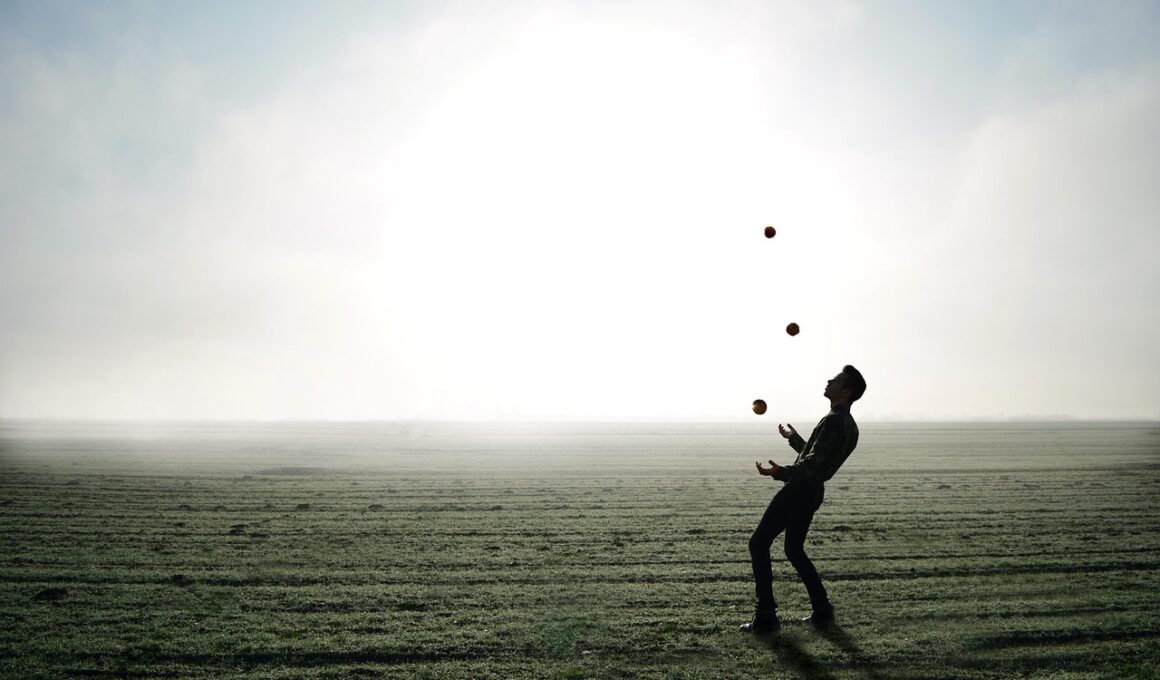Incorporating Balance and Coordination into After-School Sports Programs
After-school sports programs offer a unique opportunity to enhance the physical skill sets of children and youth. Incorporating balance and coordination activities into these programs can significantly provide benefits in overall physical development. Children engaging in activities that develop these skills not only improve their athletic performance but also gain valuable confidence. Activities like obstacle courses, balance beam exercises, and coordination drills help sharpen neural connections. While participating, children learn to navigate their physical space better and develop spatial awareness. This awareness is essential for success in various sports and activities. Programs can also introduce games that require balancing, such as one-legged hops or team relay races that emphasize coordination. These fun and engaging formats keep children motivated and excited about physical activity, enhancing their enjoyment of sports. Moreover, when provided in a supportive after-school environment, these activities foster a sense of community. Kids develop teamwork skills, learn to support one another, and build friendships. Thus, the implementation of balance and coordination activities is crucial in after-school programs to ensure holistic development in childhood.
To effectively incorporate balance and coordination activities, program leaders should begin by defining clear objectives. A structured approach can provide children with the skills they need to succeed in sports. Objectives can include enhancing core strength, increasing body control, and improving overall coordination. Assessments may be beneficial to track individual progression over time. Leaders can adapt activities according to individual skill levels, allowing for personal growth and achievement. When children reach milestones, it builds intrinsic motivation, encouraging them to continue engaging in physical exercise. Specific activities can include using balance boards, which challenge participants to maintain their stability while moving. Games can involve tossing soft balls to develop hand-eye coordination or performing group yoga exercises focused on stability. Implementing such activities can invite all skill levels, creating an inclusive environment for all participants. To further accommodate different ages and skill levels, program leaders can offer multiple options for each exercise. This adaptability ensures that everyone can participate according to their abilities while challenging themselves. Such guidance will make balance and coordination training not only effective but enjoyable for the children involved.
Benefits of Balance and Coordination Activities
The numerous benefits of introducing balance and coordination activities into after-school programs extend beyond physical improvements. These skills directly contribute to cognitive development, enabling children to process information faster. While engaging in these activities, children refine their focus and concentration. This is essential not only in sports but also in academic settings where attention to detail is crucial. Furthermore, enhancing balance and coordination promotes emotional well-being by offering positive recreational experiences. Participating in engaging activities helps children cope with stress and anxiety, fostering a positive self-image. As they improve their physical skills, they also boost their confidence. Children who excel in their activities feel valued, creating a sense of accomplishment. As they engage with peers during group exercises, social skills are also enhanced — reinforcing teamwork and cooperative play among participants. Programs can integrate games that require communication, reinforcing socialization while training coordination. By encouraging teamwork, children cultivate friendships and build supportive networks, which is important during their social development. Hence, the benefits go beyond the gym or sports field, touching on mental, emotional, and social dimensions as well.
Safety is paramount when introducing balance and coordination activities, making it vital for program leaders to implement precautionary measures. Appropriate supervision is necessary to ensure that children are safely engaging with the activities. Before starting, a proper warm-up session should be conducted to prepare their bodies and avoid injuries. Leaders should also provide adequate instructions, demonstrating proper techniques, and offering modifications to assist participants who may struggle. Using soft mats or cushioned surfaces can minimize the risk of injury during falls when practicing balance activities. Considerations for physical equipment, such as balance beams, should meet safety standards, ensuring they are sturdy and durable. Regular inspections of these elements can prevent accidents, creating a safer environment for children. Teaching children the importance of listening to their own bodies and understanding their limits is equally important during activities. This knowledge empowers them and develops lifelong habits focused on physical safety. Ultimately, creating a secure atmosphere not only enhances the learning experience but ensures enjoyment in balance and coordination exercises, enabling children to thrive while engaging actively in after-school sports programs.
Integrating Parents and Community Involvement
Integrating parents and community members into after-school sports programs can significantly enrich children’s experiences while developing balance and coordination. Parents can assist by volunteering to supervise or lead specific activities, capitalizing on their skills and passion for sports. Community members can be invited to conduct workshops on various balance and coordination techniques. Their expertise can provide children with additional exposure and learning opportunities, enhancing their growth. Regular events or demonstrations involving families can showcase children’s achievements, instilling pride and fostering a sense of community. This involvement makes physical activity a shared value, reinforcing its importance beyond school walls. Program leaders craft ways to communicate about upcoming activities with parents, inviting their support. Keeping parents engaged helps children maintain a higher commitment level to participation. Plans can be made for family participation days, where parents join children in friendly competitions or collaborative exercises that prioritize balance and coordination skills. Sharing updates with parents about children’s progress is beneficial and cultivates a supportive environment both at home and in the program. Engaging families can promote an enriched experience, reinforcing the benefits of physical activities and strengthening community bonds.
Overall, after-school sports programs deeply benefit from incorporating balance and coordination activities. These activities foster a well-rounded development approach to youth fitness. As children participate and engage in stretching their physical capabilities, they learn core skills essential for any sport. Combining fun and physical improvement ensures that children remain motivated. This strategy promotes endurance, agility, and flexibility while challenging kids emotionally and socially. When programmed effectively, these activities instill a love for movement and active engagement that can last a lifetime. Children design and recall positive memories while participating in such programs, shaping their identities. They build friendships with peers and appreciate group dynamics, enhancing their self-worth. Incorporating balance and coordination exercises promotes long-term health benefits, combating issues like childhood obesity and inactivity. Kids learn proper movement techniques through engaging play, setting the groundwork for a healthy lifestyle as they grow older. These activities can teach lessons about dedication, teamwork, and striving for personal bests. In summary, with an emphasis on these skills, after-school sports programs become valuable opportunities for youth to thrive and build resilience that extends beyond fitness.
Conclusion
In conclusion, incorporating balance and coordination into after-school sports programs creates multifaceted benefits necessary for youth development. With clear objectives, a focus on safety, and active community involvement, programs can implement these strategies effectively. This targeted approach ensures children gain essential skills that extend into various domains of their lives. Besides athletic performance improvements, balance and coordination activities invite social and emotional growth. The lasting impact manifests as children practice resilience, teamwork, and self-efficacy, pivotal for their future endeavors. Furthermore, these positive experiences encourage continued engagement in sports and activity throughout their lives. With each session, children uncover newfound abilities, fostering a mindset of perseverance. Parents and communities play vital roles, underscoring the values and benefits of youth physical fitness. By creating an inclusive atmosphere, everyone can participate, reinforcing the importance of balance and coordination. It presents opportunities for fun and learning that children remember fondly. To maximize the potential benefits, programs should consistently evaluate and adjust their offerings to meet participants’ evolving needs. Overall, investing in balance and coordination within after-school sports programs is essential in shaping a healthier generation today.
In summary, enhancing balance and coordination in children’s fitness programs not only supports their development but also promotes a lifelong appreciation for physical activity. Providing kids with diverse activities allows them to explore their limits, fostering confidence and inspiring them to embrace new challenges in sports and life. A comprehensive approach to fitness curriculum engages various skills, leading to holistic growth. Best practices ensure customized activities cater to children’s interests, transforming physical education into a lively platform for learning and growth. Incorporating feedback from kids, parents, and volunteers further enriches program offerings. In embracing balance and coordination activities, after-school sports can unleash a world of possibilities for youth, empowering them to navigate their physical and emotional landscapes with ease.


